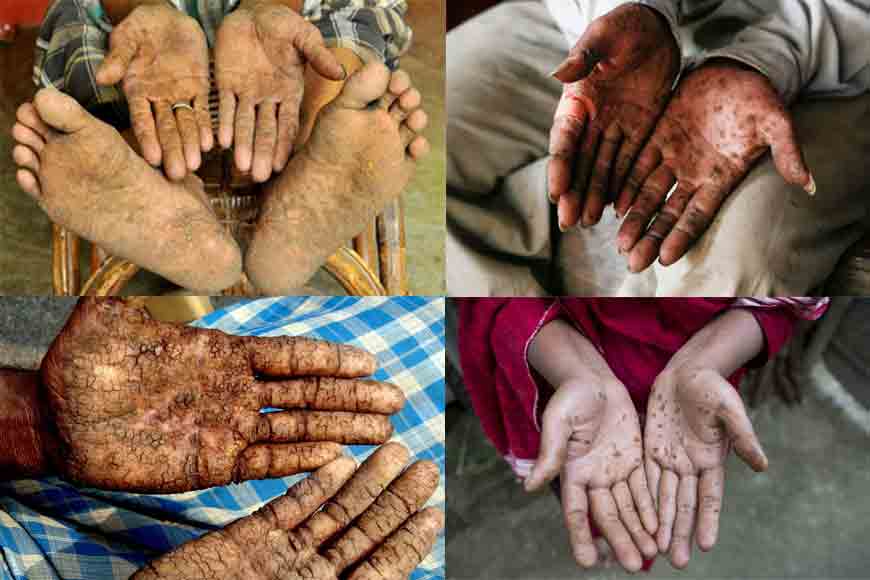Arsenic toxicity is a great threat to West Bengal

Arsenic toxicity is a great threat to human existence and in many parts of West Bengal, the situation is truly grim. Recently, a survey was conducted in 81 arsenic-infected residential clusters of Malda and it was found that out of those 81 clusters, 18 did not have any other alternative source of water. Hence, the residents were totally dependent on the poisonous water for all their requirements. The West Bengal Pollution Control Board had conducted a similar survey at a number of blocks in Gaighata under North 24 Parganas district and found that there was a 50 percent rise in arsenic concentration in water from its previous year.
Eight arsenic and iron removal plants are operational in different blocks of North 24 Parganas including Bagda, Baduriya and Bongaon. However, three of the plants have major mechanical flaws to the extent of 25 percent, 40 percent and 50 percent respectively. In many cases, there is no proper system of disposal of the toxic sludgeand it is being deposited in the nearby pond or river. This is dangerous as the arsenic level increases alarmingly and it is absorbed in the soil and the farm produce that is consumed by all living things.

Wide-spread arsenic contamination and its detrimental effect on living things, especially human beings was first noticed in the 1980s. Since 1988, water samples from 150 tube-wells were analyzed for arsenic (As) in all 19 districts of West Bengal. In nine districts, arsenic was found above the national standard (50 μg/L) and in five districts, between 10 and 50 μg/L. Since then four decades went but no concrete programme was undertaken to provide arsenic-free water to the people in the affected areas. This question was also raised at the national environmental court of justice. The court categorically raised suspicion about the efficiency of the projects employed by the authorities to rid an area of arsenic contamination.
IIT Kharagpur, IIEST, Jadavpur University and Kalyani University have been assigned to study and assess the 32 plants independently and submit their reports within a year. Each institution will study eight plants and submit their reports within the stipulated time. Subrata Mukherjee, minister for Public Health Engineering, Government of West Bengal partly accepts the allegation concerning the running of the 32 plants in operation. He says there may have been a few slips here and there while the plants have been functioning but there is no denying that the state has done remarkably well in fighting against arsenic contamination. Fifty percent work is already over and another 50 per cent remains to be dome. The Central Government’s decision to cut down funds has obviously affected the work. Water is drawn from the Ganga or other rivers and ponds. This is meticulously checked in the lab before certifying it fit for consumption and only then it is supplied.<









